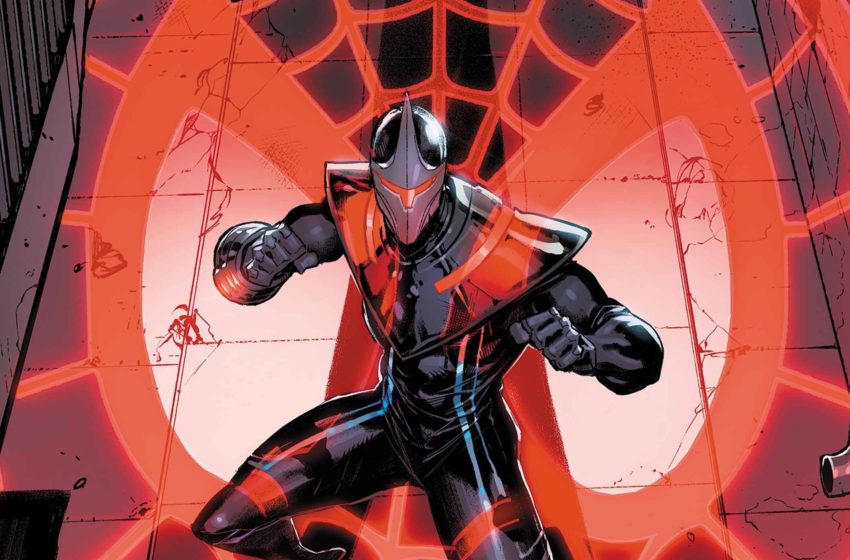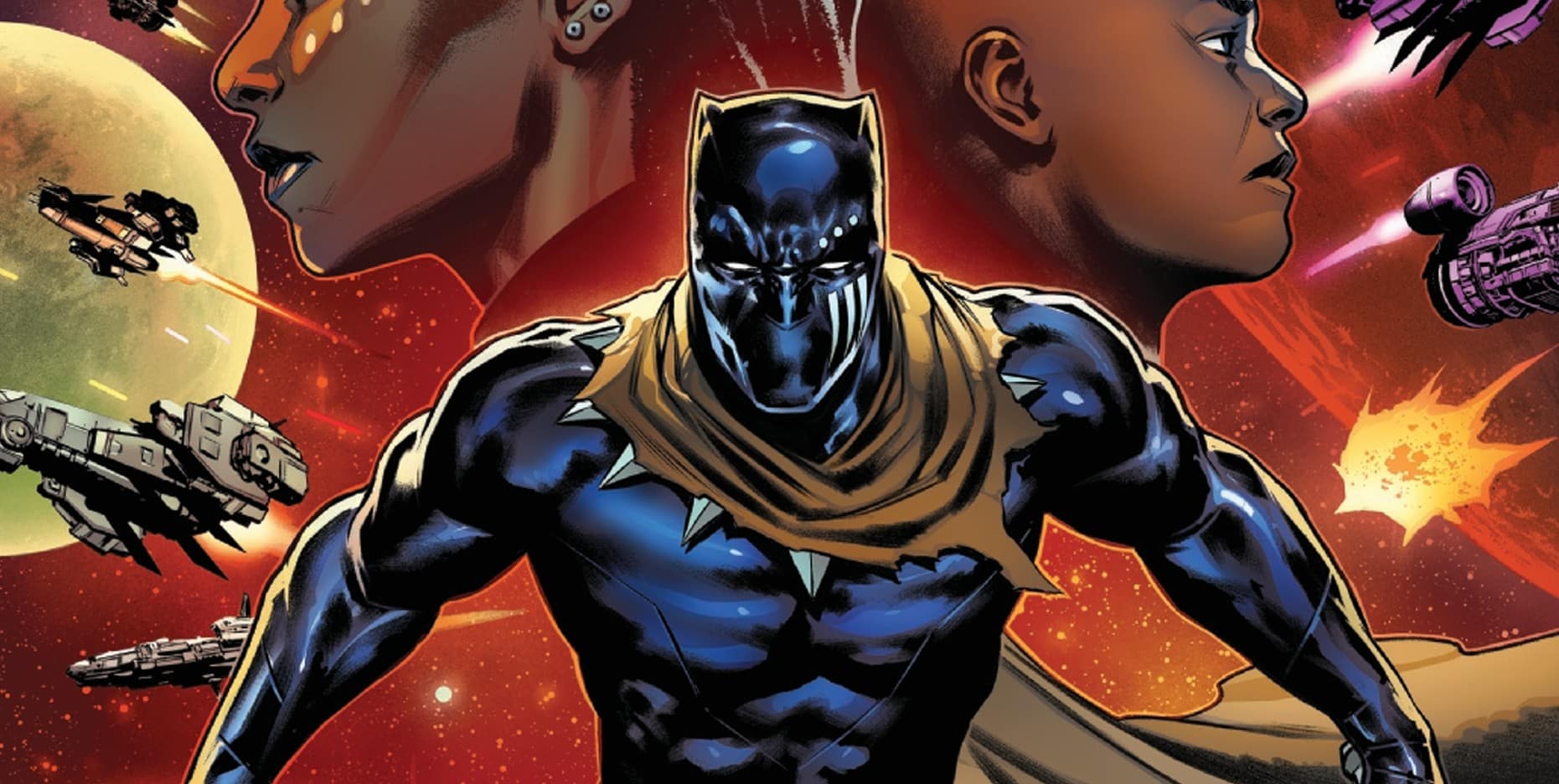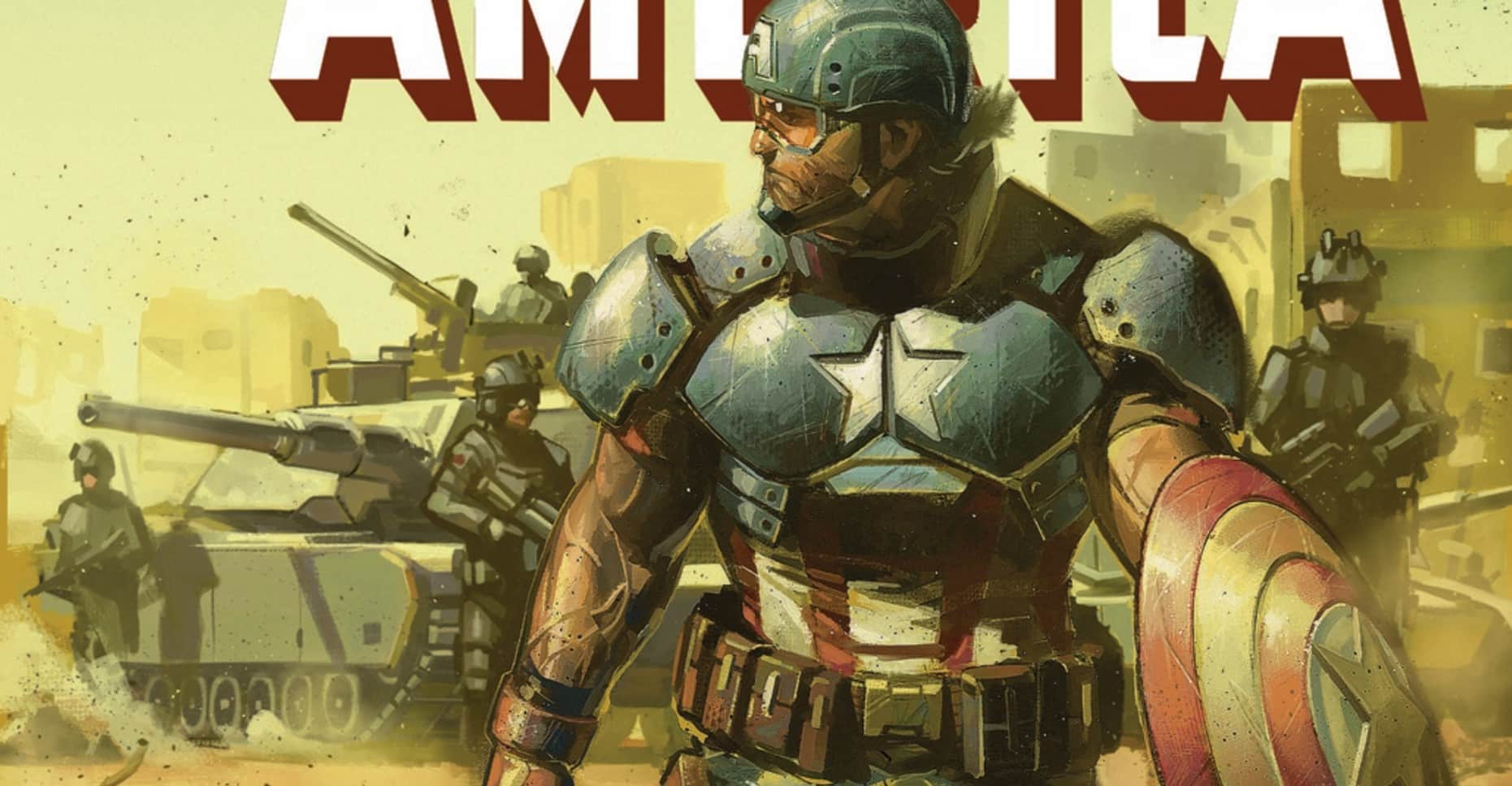Connor Young just discovered the amulet that makes him a masked, flying hero. He’s also just discovered that he has MS. He’s not the same confident teenage hoops star everyone thought he was. So who’s he gonna be? Darkhawk #2, written by Kyle Higgins, art by Juanan Ramirez, colors by Erick Arciniega, letters by VC’s Travis Lanham.
Superheroes’ powers can look like, and act like, and stand for, disabilities: that’s nothing new, not even outside of Marvel’s X-line, where it’s a constitutive feature. Some heroes even have literal disabilities that exist in our world too: they’re wheelchair users, for example. Or hearing-impaired. Details of life with a real disability, though, often get short shrift in Big Two stories: Charles Xavier used a wheelchair for decades, but did he ever find himself stuck on the sidewalk for lack of a curb cut? The exceptions– such as Matt Fraction and David Aja’s famous all-ASL, speech-balloon-free issue of Hawkeye– stand out as, well, exceptions.
Darkhawk wants to be one of the exceptions. Last issue high school basketball star Connor Young found out that he had multiple sclerosis: he also acquired the amulet that let him become the armored badass 90s-vintage hero Darkhawk. This issue he’s facing up to both discoveries: he’s learning to self-inject the meds he needs, hearing about (of course) insurance struggles, and also trying to keep his best friend Derek, who’s convinced himself that Connor is still sure to play top DivisionaI ball.
That’s the emotional background, the setup, this issue, and it’s solid, though it won’t surprise many readers. Connor, however, proves easier to surprise: he’s slow to figure out that Derek has turned into kind of a jerk. Derek wants his top-of-the-line Prvmo sneakers, and he wants them now, even if he can barely afford them– these kids aren’t rich: they live in a solidly working-class part of the Bronx. “Nothing’s special about Woodlawn.” And Derek wants to be special.
He wants it so bad that he’ll participate in what seems to be a sting operation, so that when he gets attacked by thugs who want to steal his new sneaks, Darkhawk– the neighborhood’s new local hero– will have to show up and defend him. Of course, it all goes sour when Derek realizes who Darkhawk really is…
Oh, and Miles Morales shows up. Of course. Without the MS this story would have exactly the same beats as a Miles story or even an early Spider-narrative: teenage boy discovers that with great power comes great responsibility, while his frustrated friend makes a mega-mistake. It wouldn’t be a bad Miles story, either: it’s down-to-earth in the best sense, with agreeable detail work on the people and streetscapes, jagged lines where the young men move fast, expressive faces where they argue and chat.
The issue changes pace fast in the second half, too, and Ramirez’s pens keep up: after several pages of talking heads (and needles and syringes) in front of domestic interiors, the comic shifts into Big! Fistfight! mode, with two full-page Darkhawk-Attacks spreads. You call it a way to make up for a thin story, I call it a way to appreciate dynamic art. Ramirez’s pens and inks fit teen athletes and teen hoodlums perfectly: I’d love to see him draw a realist YA story too.
I’d also love to see him draw some non-men. Darkhawk #2 is an absolute sausage party like the issue before it. I suppose it’s talking about masculinity: who’s a real man, what athletic prowess, and financial stability, and self-confidence, mean or should mean, for teenage boys and for grown dudes (Connor’s dad is trying his best). Still, would it kill Kyle Higgins to put a girl somewhere? Maybe a basketball cameo? (The WNBA’s Betnijah Lahey, maybe? Or Sue Bird?)
Like every issue of Darkhawk– so we’re told– this one ends with a prose interview; we hear from the Chief Science Officer of the National MS Society, Dr. Tim Coetzee, who explains the disease and has particular advice for MS in athletes, as well as for people newly diagnosed. It’s a good read.
There are kids and grownups out there who need for very personal reasons to see a hero with MS– a hero whose powers don’t automatically compensate (as Matt Murdock’s do) for his disability. There are kids and grownups out there who would love nothing more than to see another street-level hero dealing with false friends, working-class pride, and teen angst. I’m on the edge of both groups. And I like Darkhawk #2— but so far it’s taking open mid-range jump shots, moves that feel old-school and work anyway. Maybe next time we’ll get a few corner threes.
Stephanie Burt is Professor of English at Harvard. Her podcast about superhero role playing games is Team-Up Moves, with Fiona Hopkins; her latest book of poems is We Are Mermaids. Her nose still hurts from that thing with the gate.






